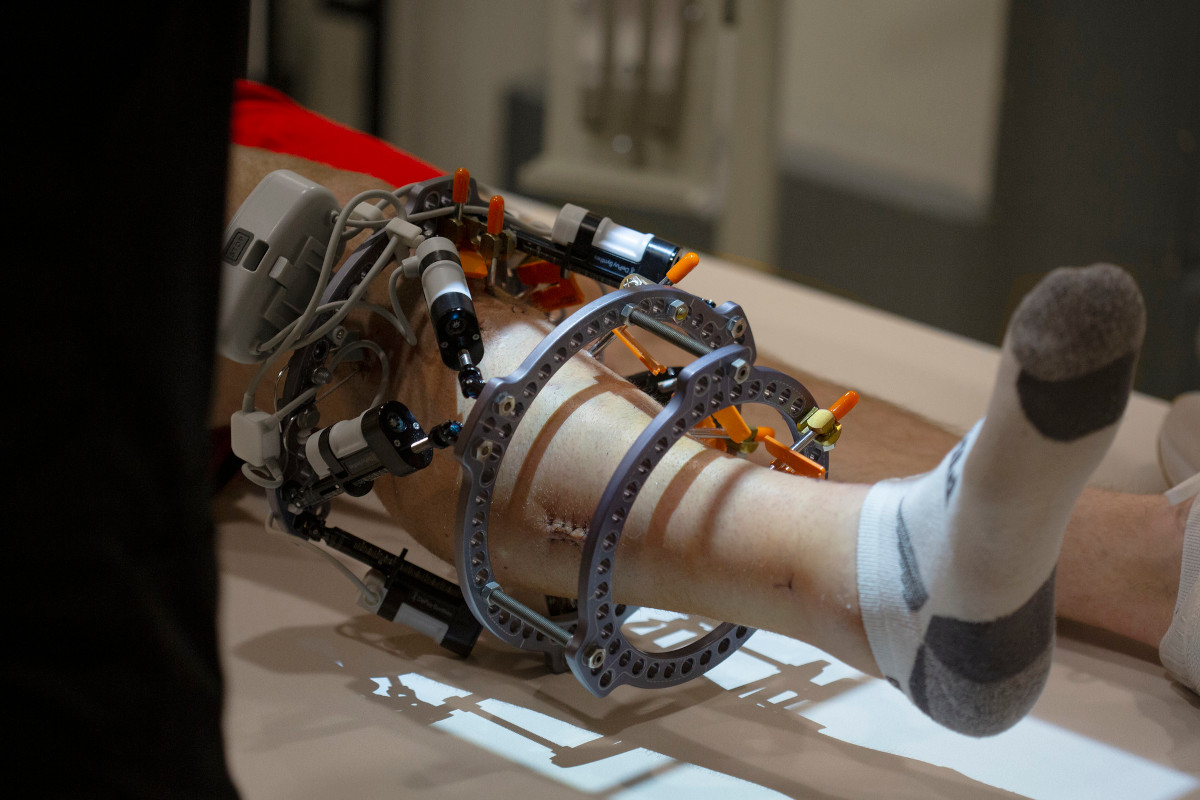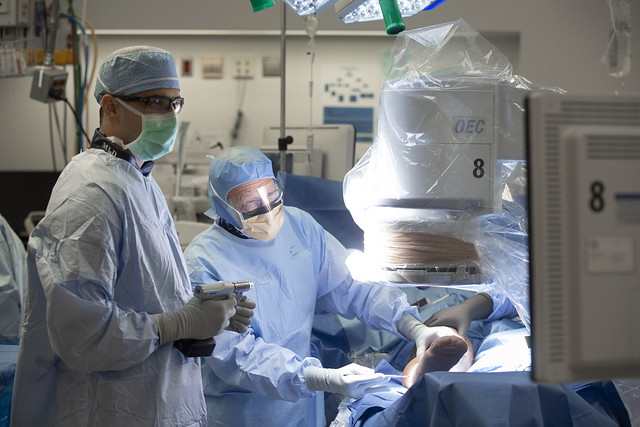Hershey Medical Center among first in the nation to use new device for bone reconstruction

Penn State Health Milton S. Hershey Medical Center is the first hospital in Pennsylvania and among the first in the nation to treat a patient with a new external device designed to correct bone fractures and deformities. The digitally enabled robotic fixation device is programmed to adjust automatically, eliminating the need for patients to do so manually.
External fixation devices are common in the treatment of bone deformities, bone loss and shortening. The Autostrut was developed by a company called OrthoSpin for use with Depuy Synthes’ Maxframe external fixation system to offer more personalized treatment to patients with these severe orthopedic conditions. This second generation Autostrut system was approved by the Food and Drug Administration last year. In May, the Milton S. Hershey Medical Center became the third hospital nationwide to use it.
“In the past, patients with these hexapod-type external fixation systems have had to manually make adjustments multiple times per day to achieve the desired correction.” said Dr. J. Spence Reid, an orthopedic surgeon at Penn State Bone and Joint Institute, who also consulted on the development of Maxframe. “This new device is programmable and moves automatically up to 16 times per day. This will be much easier for patients to manage and we believe will cause less pain. It will expand this method of treatment for a range of patients including pediatrics, the elderly and patients with disabilities.”
Greg Fonti of Hummelstown became the first patient to be outfitted with the device at Hershey Medical Center after a motorcycle accident injured bones in his leg, causing them to be different lengths. “It is certainly doing its job,” Fonti said. “I can tell a major difference already in the length of my leg.”
The Maxframe Autostrut consists of both hardware — such as struts and a control system with attached lightweight motors — and software. It is placed externally and connected to bones through pins and wires. Movements of the bone segments are made by adjusting the rings on the outside. The integrated software also allows physicians to monitor patient progress and adjust treatment programs when necessary.
More information on Penn State Bone and Joint Institute can be found here.
If you're having trouble accessing this content, or would like it in another format, please email Penn State Health Marketing & Communications.

